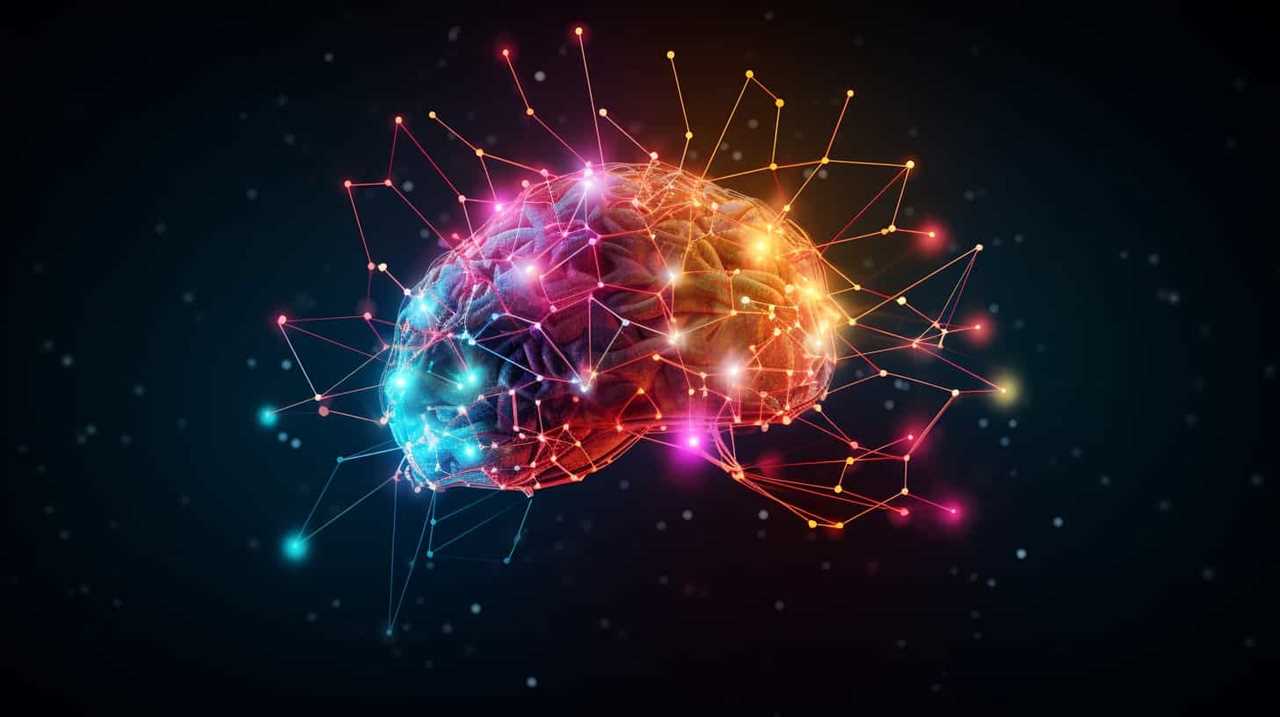As guardians of the digital realm, it is our responsibility to enhance our security protocols in order to combat the ever-evolving threats of cyber attacks aimed at artificial intelligence systems.
In this article, we present strategies to bolster the security of AI, protecting it from malicious intrusions. By understanding vulnerabilities, recognizing potential threats, and implementing robust authentication and encryption measures, we can fortify our digital fortresses.
Through continuous monitoring and detection, we remain vigilant in the face of danger, ensuring the mastery of AI security.
Key Takeaways
- Understanding AI system vulnerabilities, such as manipulation of training data and introduction of biased information, is essential for securing AI against cyber attacks.
- Recognizing potential cyber threats and staying informed about attack vectors and threat intelligence are crucial for safeguarding AI systems.
- Implementing robust authentication measures like multi-factor authentication reduces the risk of unauthorized access and enhances security.
- Establishing comprehensive data encryption protocols, including choosing robust encryption algorithms and implementing end-to-end encryption, ensures data privacy and protection against emerging threats.
Understanding AI System Vulnerabilities
Our team’s analysis revealed several key vulnerabilities in AI systems that could potentially be exploited by cyber attackers. Understanding these weaknesses is crucial in protecting sensitive data.

One of the main vulnerabilities lies in the training phase of AI systems. Attackers can manipulate the training data or introduce biased information, leading to skewed results and compromised decision-making.
Additionally, AI models can be susceptible to adversarial attacks, where malicious inputs are crafted to deceive the system and produce incorrect outputs.
Another concern is the lack of explainability in AI algorithms, making it difficult to identify and address vulnerabilities.
To safeguard against these threats, proactive measures must be taken. This includes implementing robust security protocols, ensuring data integrity, regularly updating AI models, and conducting thorough vulnerability assessments.

Recognizing Potential Cyber Threats
To effectively safeguard AI systems against cyber attacks, we must be vigilant in recognizing potential threats. This requires evaluating attack vectors and assessing threat intelligence to stay one step ahead of adversaries. Here are three key points to consider:
- Understanding attack vectors: Identifying the various ways in which AI systems can be compromised is crucial. This includes analyzing potential vulnerabilities in data inputs, algorithms, and communication channels.
- Staying informed: Assessing threat intelligence allows us to proactively identify emerging cyber threats and understand the tactics, techniques, and procedures used by attackers. Regularly monitoring security forums, collaborating with industry peers, and leveraging threat intelligence platforms can provide valuable insights.
- Conducting risk assessments: Regularly evaluating the risks associated with AI systems helps identify potential vulnerabilities and prioritize security measures. This involves assessing the impact of potential cyber threats on confidentiality, integrity, and availability, and implementing appropriate safeguards.
Implementing Robust Authentication Measures
To effectively strengthen the security of our AI systems against cyber attacks, we must implement robust authentication measures that ensure only authorized individuals can access and interact with the system.
One such measure is multi-factor authentication (MFA), which adds an extra layer of security by requiring users to provide multiple forms of identification before gaining access. This could include something they know (such as a password), something they’ve (such as a security token), or something they are (such as a fingerprint or facial recognition). MFA significantly reduces the risk of unauthorized access even if one factor is compromised.
Additionally, biometric authentication, which relies on unique physical or behavioral traits, can further enhance security.

Establishing Comprehensive Data Encryption Protocols
Implementing strong data encryption protocols is crucial for safeguarding our AI systems against cyber attacks. By establishing comprehensive data encryption protocols, we can ensure that sensitive information remains secure and protected.
Here are three key considerations when implementing data encryption protocols:
- Choosing robust encryption algorithms: Selecting encryption algorithms that are resistant to attacks and have been widely tested is essential. Algorithms like AES (Advanced Encryption Standard) and RSA (Rivest-Shamir-Adleman) are commonly used and offer strong security.
- Implementing end-to-end encryption: By encrypting data at its source and decrypting it only at its intended destination, end-to-end encryption ensures data privacy throughout its entire journey.
- Regularly updating encryption protocols: As cyber threats evolve, it’s crucial to stay up-to-date with the latest encryption protocols and best practices. Regularly reviewing and updating encryption protocols ensures that our AI systems remain protected against emerging threats.
Developing Continuous Monitoring and Detection Strategies
We prioritize the development of robust continuous monitoring and detection strategies to safeguard our AI systems against cyber attacks. Continuous monitoring is essential for identifying potential security threats in real time, allowing us to respond promptly and effectively. By implementing advanced techniques such as anomaly detection and behavior analysis, we can proactively detect any abnormal activity within our AI systems. Additionally, leveraging machine learning algorithms enables us to continuously learn and adapt to new attack vectors, enhancing our threat detection capabilities. To engage our audience, we have included a table below showcasing some common continuous monitoring techniques and their benefits:
| Technique | Benefits |
|---|---|
| Log Monitoring | Early detection of suspicious activities |
| Network Traffic Analysis | Identification of potential security breaches |
| Endpoint Protection | Real-time threat detection and response |
| User Behavior Analytics | Detection of abnormal user behavior |
| Intrusion Detection System | Immediate detection and prevention of attacks |
Frequently Asked Questions
How Can Organizations Identify the Vulnerabilities in Their AI Systems?
We identify vulnerabilities in our AI systems through rigorous AI system auditing. By proactively examining the system’s design, implementation, and data inputs, we can detect and address potential security weaknesses before they are exploited by cyber attacks.

What Are Some Common Techniques Used by Cyber Attackers to Target AI Systems?
Adversarial attacks and data poisoning are common techniques used by cyber attackers to target AI systems. These attacks exploit vulnerabilities in the algorithms and data used by the AI, compromising its integrity and effectiveness.
Are There Any Specific Authentication Measures That Can Help Protect AI Systems From Cyber Threats?
Multi factor authentication and biometric authentication are effective measures to protect AI systems from cyber threats. By combining multiple authentication factors and using biometric data, we can ensure a higher level of security.
How Can Organizations Ensure That Their Data Encryption Protocols Are Comprehensive and Effective?
How can we ensure our data encryption protocols are comprehensive and effective? Are our encryption key management practices up to par? Regular data encryption audits can help identify vulnerabilities and ensure the security of our sensitive information.
What Are Some Best Practices for Continuous Monitoring and Detection of Cyber Threats in AI Systems?
Continuous monitoring techniques are crucial for identifying vulnerabilities in AI systems. We proactively monitor and detect cyber threats, ensuring the security of our AI systems. Our meticulous approach guarantees comprehensive protection against potential attacks.

Conclusion
In conclusion, safeguarding AI systems against cyber attacks requires a meticulous and proactive approach.
By understanding vulnerabilities, recognizing threats, implementing robust authentication measures, establishing encryption protocols, and developing continuous monitoring strategies, we can protect the integrity and security of AI technologies.
Let’s stay one step ahead of cyber attackers and ensure that the future of AI is built on a foundation of trust and resilience.
Remember, the only thing more advanced than AI technology is our determination to secure it.










